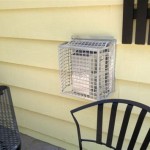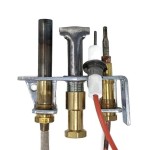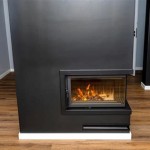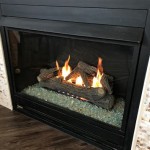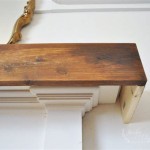How To Attach a Wood Mantel to a Stone Fireplace
Attaching a wood mantel to a stone fireplace can significantly enhance the aesthetic appeal of a living space, providing a focal point and a touch of warmth. However, this project requires careful planning, precise execution, and the appropriate tools and materials to ensure a secure and visually pleasing result. The process involves considering the stone type, mantel weight, and desired mounting method to choose the best approach for a long-lasting and safe installation.
Before commencing the installation, thoroughly assess the existing stone fireplace. Note the type of stone (e.g., fieldstone, slate, manufactured stone), its texture, and its integrity. Different stone types may require different anchoring techniques. Similarly, the weight of the wood mantel is a crucial factor in determining the necessary support and hardware. Always consult building codes and local regulations to ensure compliance, as fireplace installations often have specific requirements regarding clearances and flammability.
Safety is paramount throughout the project. Wear appropriate personal protective equipment, including safety glasses, gloves, and a dust mask or respirator, especially when drilling into stone. Ensure the work area is well-ventilated, and take precautions to protect surrounding furniture and flooring from dust and debris. When lifting heavier mantels, enlist assistance to prevent injury and ensure proper positioning.
Key Point 1: Assessing the Fireplace and Mantel
The initial assessment phase is critical for a successful wood mantel installation. Begin by meticulously inspecting the stone fireplace. Look for any signs of damage, such as cracks, loose stones, or crumbling mortar. Repair any existing damage before proceeding, as these issues can compromise the stability of the mantel attachment. Clean the stone surface thoroughly, removing dust, dirt, and debris with a brush and a mild detergent solution. Allow the surface to dry completely before starting the installation.
Next, carefully examine the wood mantel. Note its dimensions, weight, and material. Solid wood mantels are considerably heavier than hollow or manufactured wood mantels, and this weight difference will influence the choice of anchoring method. Determine the desired height and placement of the mantel on the fireplace. Consider the proportions of the fireplace and the overall room design to achieve a balanced and aesthetically pleasing look. Mark the intended location of the mantel on the stone fireplace using a level and a pencil or marker.
When choosing a wood mantel, ensure it is properly treated for fire resistance, especially if it will be placed close to the fireplace opening. Fire-retardant coatings can significantly reduce the risk of ignition. Also, consider the style of the mantel and how it complements the existing décor. A well-chosen mantel can enhance the character of the room and create a cohesive design.
Accurately measuring the dimensions of both the fireplace and the mantel is crucial for proper alignment and fit. Use a laser level to ensure the mantel is perfectly horizontal. Measure the distance from the fireplace opening to the bottom of the mantel to ensure adequate clearance for safety and functionality. Account for any irregularities in the stone surface that may affect the mantel's placement.
Key Point 2: Choosing the Right Attachment Method and Hardware
Selecting the appropriate attachment method and hardware is essential for a secure and stable wood mantel installation on a stone fireplace. Several methods can be employed, each with its advantages and disadvantages. The most suitable method depends on the type of stone, the weight of the mantel, and the desired aesthetic.
One common method involves using heavy-duty masonry anchors or sleeves. These anchors are designed to be embedded into the stone and provide a strong holding point for the mantel supports. This method is particularly effective for heavier mantels, as it distributes the weight evenly across multiple anchor points. To install masonry anchors, drill pilot holes into the stone at the marked locations, using a masonry drill bit that is slightly smaller than the anchor's diameter. Insert the anchors into the holes and tighten them according to the manufacturer's instructions. Ensure the anchors are securely embedded in the stone before attaching the mantel supports.
Another method involves using a French cleat system. A French cleat consists of two interlocking pieces of wood or metal, one attached to the back of the mantel and the other to the stone fireplace. This system allows for easy installation and removal of the mantel, and it can also be adjusted to ensure a level and even fit. To install a French cleat, attach the top piece of the cleat to the stone fireplace using masonry anchors. Ensure the cleat is level before securing it. Then, attach the bottom piece of the cleat to the back of the mantel. Align the two pieces and slide the mantel into place.
For lighter mantels, construction adhesive can be used in conjunction with mechanical fasteners for added support. Apply a generous layer of construction adhesive to the back of the mantel, ensuring it makes contact with the stone surface. Position the mantel against the fireplace and hold it in place until the adhesive sets. Use temporary supports, such as shims or wooden blocks, to keep the mantel level and securely positioned during the drying process. Once the adhesive has cured completely, remove the temporary supports and check the stability of the mantel.
The selection of hardware is equally important. Choose high-quality stainless steel or galvanized steel screws and bolts that are specifically designed for masonry applications. Avoid using drywall screws or other fasteners that are not intended for use with stone, as these may not provide adequate holding power and can corrode over time. Ensure the hardware is appropriately sized for the weight of the mantel and the thickness of the stone.
Key Point 3: Installation Procedures and Best Practices
The installation process requires precision and attention to detail to ensure a safe and aesthetically pleasing result. Begin by carefully marking the locations for the anchors or supports on the stone fireplace, using a level and a measuring tape. Double-check all measurements to ensure accuracy, as even a slight misalignment can affect the overall appearance of the installation.
When drilling into stone, use a hammer drill with a carbide-tipped masonry drill bit. Start with a low speed and gradually increase the speed as you drill. Apply steady pressure, but avoid forcing the drill bit, as this can damage the stone or the drill bit. Periodically remove the drill bit to clear away dust and debris. Drill the holes to the depth specified by the anchor manufacturer.
After drilling the pilot holes, insert the masonry anchors or sleeves into the holes and tighten them according to the manufacturer's instructions. Ensure the anchors are securely embedded in the stone before attaching the mantel supports. Use a wrench or a socket set to tighten the anchors until they are snug, but avoid overtightening, as this can damage the stone or the anchors.
Once the anchors are in place, attach the mantel supports to the anchors using screws or bolts. Ensure the supports are level and securely fastened to the stone fireplace. Use shims if necessary to adjust the angle of the supports and ensure the mantel sits level. Carefully position the wood mantel onto the supports and check for proper alignment and fit. Adjust the position of the mantel as needed to achieve the desired look.
If using construction adhesive, apply a generous layer of adhesive to the back of the mantel, ensuring it makes contact with the stone surface. Carefully position the mantel against the fireplace and press it firmly into place. Use temporary supports to hold the mantel in position while the adhesive cures. Allow the adhesive to cure for the recommended time period, as specified by the manufacturer.
After the mantel is installed, inspect it carefully to ensure it is level, secure, and properly aligned. Fill any gaps or cracks with caulk or wood filler to create a seamless and professional finish. Sand the filled areas smooth and paint or stain them to match the mantel. Clean the surrounding area and remove any debris.
Regularly inspect the wood mantel and its attachment to the stone fireplace to ensure its continued stability and safety. Check for any signs of damage, such as cracks, loose anchors, or sagging. Repair any issues promptly to prevent further damage or potential hazards. Clean the mantel regularly to remove dust and dirt, and apply a protective finish to maintain its appearance and longevity.
Proper installation of a wood mantel on a stone fireplace is a meticulous process that requires careful planning, precise execution, and the use of appropriate tools and materials. By following these guidelines and best practices, one can achieve a secure, aesthetically pleasing, and long-lasting installation that enhances the beauty and functionality of the living space.

Fireplace Mantel Installation Before And After

How To Build And Hang A Mantel On Stone Fireplace Shanty 2 Chic

Installing And Making A Floating Mantle For Our Stone Fireplace

How To Build And Hang A Mantel On Stone Fireplace Shanty 2 Chic

Installing And Making A Floating Mantle For Our Stone Fireplace

How To Install Decorate Wood Fireplace Mantels

Guide Mantel Installation On A Stone Fireplace

How To Build And Hang A Mantel On Stone Fireplace Shanty 2 Chic

Fireplace Mantel Installation Before And After

How To Install Decorate Wood Fireplace Mantels
Related Posts

